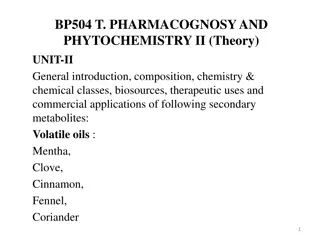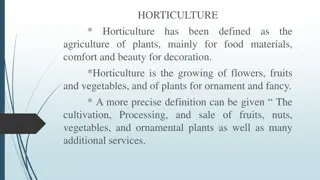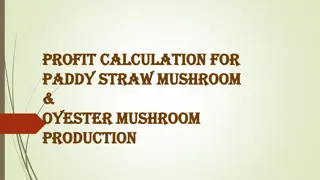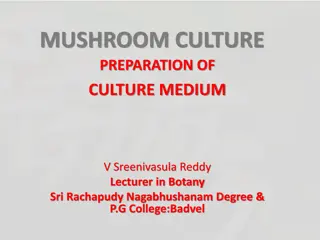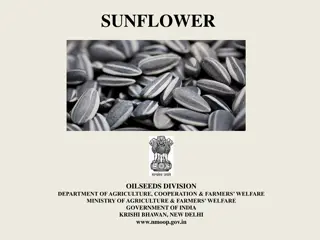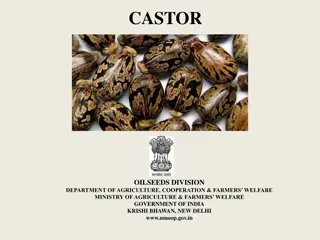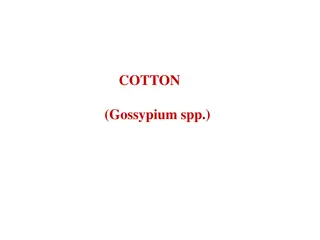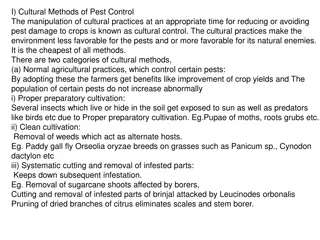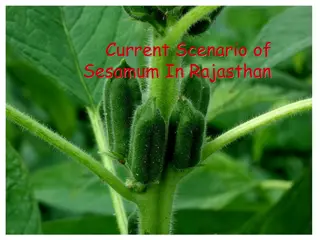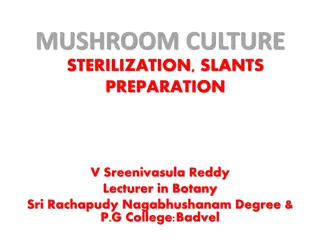Guide to Agaricus Bisporus Mushroom Cultivation
Agaricus bisporus, or the white button mushroom, is a widely cultivated and consumed mushroom known for its mild flavor and culinary versatility. The cultivation process involves substrate preparation, spawning, casing layer application, pinning, mushroom growth under controlled conditions, harvesting, post-harvest care, and cropping cycles. Learn how to grow these mushrooms at home or commercially for a fresh and sustainable food source.
Download Presentation

Please find below an Image/Link to download the presentation.
The content on the website is provided AS IS for your information and personal use only. It may not be sold, licensed, or shared on other websites without obtaining consent from the author. Download presentation by click this link. If you encounter any issues during the download, it is possible that the publisher has removed the file from their server.
E N D
Presentation Transcript
Mushroom Cultivation Agaricus bisporus by Dr. Subrata Giri
Introduction Agaricus bisporus, commonly known as the white button mushroom, is one of the most widely cultivated and consumed mushrooms worldwide. This mushroom species belongs to the agaric family and is cherished for its mild flavor and versatile culinary applications. Cultivating Agaricus bisporus has become a significant agricultural practice due to the growing demand for fresh mushrooms in the food industry and among health-conscious consumers.
Process Substrate Preparation: The cultivation process begins with preparing the mushroom's growth medium or substrate. Traditionally, compost is used as the substrate, which includes a mixture of materials like straw, horse manure, gypsum, and other organic supplements. The compost undergoes a carefully controlled composting process to create an optimal environment for mushroom growth. Spawning: Once the compost is ready, it is spread in a growing container or bed. The next step involves introducing mushroom spawn, which are small particles or "seeds" containing the mycelium (the vegetative part of the fungus). The mycelium will colonize the compost and form a network of fine threads, preparing the substrate for mushroom development. Casing Layer: After the mycelium has adequately colonized the compost, a layer of casing material is applied on top. Common casing materials include a mixture of peat moss and vermiculite. The casing layer encourages the mushrooms to form primordia, the tiny pins that will develop into mature mushrooms.
Continue Pinning and Mushroom Growth: Under controlled environmental conditions of temperature, humidity, and light, the primordia develop into baby mushrooms, known as "pins." These pins continue to grow and elongate into fully formed mushrooms. Regular misting and ventilation are essential to maintain proper humidity and ensure healthy growth. Harvesting: Depending on the mushroom variety and desired size, the harvesting process begins when the mushrooms reach the desired stage of maturity. Harvesting is usually done by hand, carefully plucking the mushrooms from the substrate to avoid damaging the mycelium.
Continue Post-Harvest: After harvesting, the substrate is allowed to rest and recover before a new flush of mushrooms emerges. Proper post-harvest care, including sanitation and pest management, is crucial to maintain healthy mushroom production. Cropping Cycle: Agaricus bisporus typically goes through several cropping cycles, producing multiple flushes of mushrooms over several weeks. Once the substrate's nutrients are depleted, it is replaced with fresh compost, starting the cultivation cycle anew.
Conclusion The cultivation of Agaricus bisporus involves a carefully controlled process that requires attention to environmental factors, hygiene, and substrate preparation. With the increasing popularity of mushrooms as a nutritious and versatile food, the cultivation of white button mushrooms continues to be an essential aspect of the global mushroom industry, providing a steady supply of this delectable fungus to consumers worldwide.








